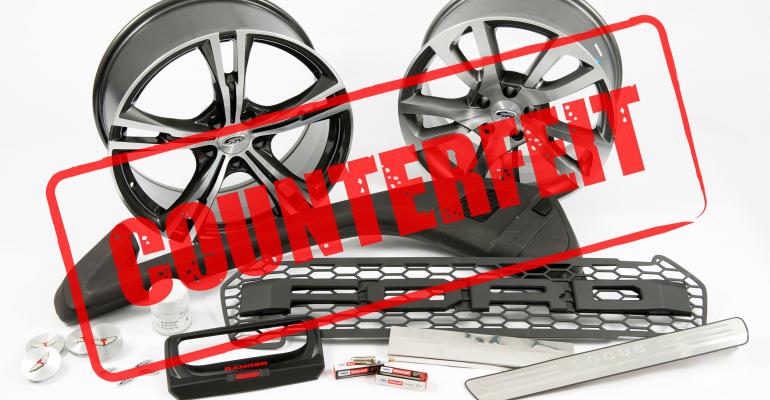Australia is right in the gunsights of the multibillion-dollar-a-year trade in counterfeited and pirated car parts.
The Federal Chamber of Automotive Industries, representing Australian car importers and distributors, is concerned by the escalation in shoddy and unreliable vehicle parts entering the country and is telling repairers, insurers and motorists to be on their guard.
Investigations over the past two years by the Australian Department of Immigration and Border Protection have resulted in more than 6,000 items being seized, with an estimated value in excess of A$550,000 ($396,660).
The seized items were branded Ford, GM Holden and Toyota, among many others.
The FCAI also cites a new report by the Organization for Economic Co-operation and Development and the European Union’s Intellectual Property Office that imports of counterfeit and pirated goods make up about 2.5% of global imports, with fake car parts from Asia a growing part of that trade.
FCAI CEO Tony Weber says the biggest risk in using these parts is compromising vehicle safety.
“The gamut of fakes includes everything from bogus wheels and body panels to safety-critical components like brake pads and airbags,” Weber says in a statement.
“The only way to guarantee supply of genuine parts is by sourcing them through the vehicle maker’s authorized supply chain and to support those repairers who insist on using the genuine article.”
Ford Australia has seized fake alloy rims for Ford Performance Vehicles and air-intake snorkels and grilles for its Ranger pickup.
Toyota has found numerous counterfeits, including water pumps, wheel bearings, brake pads and the spiral cable that controls multiple steering wheel functions, including airbag deployment.
Fake GM Holden parts include body panels, alloy rims, grilles, taillights and radiators.
A testing program late last year by the FCAI saw a set of fake Mercedes-Benz wheels, on sale in Australia, dangerously disintegrate in a 31-mph (50-km/h) pothole test. The genuine wheels sustained no visible damage.
A Toyota Australia spokesman says the phony brake pads and spiral cable are two of the most worrying recent discoveries.
“The fake brake pads were being marketed as genuine by a local third-party retailer,” he says. “When tested, they were found to contain asbestos.”
At first glance the cable looks genuine, but a closer look found “frightening inadequacies” such as airbag circuit terminals that should be gold-plated for maximum durability and connectivity, but aren’t.
“This means there’s a high likelihood of insufficient conductivity to support airbag deployment in an accident,” the Toyota spokesman says.
“Most of the counterfeit parts we have identified were supplied in fake Toyota packaging, so consumers shouldn’t think that just because they see a Toyota box, bag or label that they’re buying a genuine part.”
Multiple sets of fake alloy rims, bearing GM Holden’s “lion and stone” logo, have been found to vary significantly from genuine items and even have been sold in fake GM-branded bubble-wrap.
Weber says many consumers who are looking for a good deal can’t tell the difference between a genuine part and a counterfeit one.
“The major concern is safety, and using counterfeit parts, knowingly or otherwise, means you’re taking a huge risk,” he says.
The FCAI’s Genuine Is Best initiative focuses on the safety, performance and durability benefits delivered by genuine replacement parts.
These parts are made or selected by the vehicle’s maker and rigorously tested as an integral component of the vehicle to meet high quality, safety and performance standards.
“This ensures a vehicle will drive, function and protect in the way it was intended,” Weber says. “Use anything else and you may be taking a risk.”





